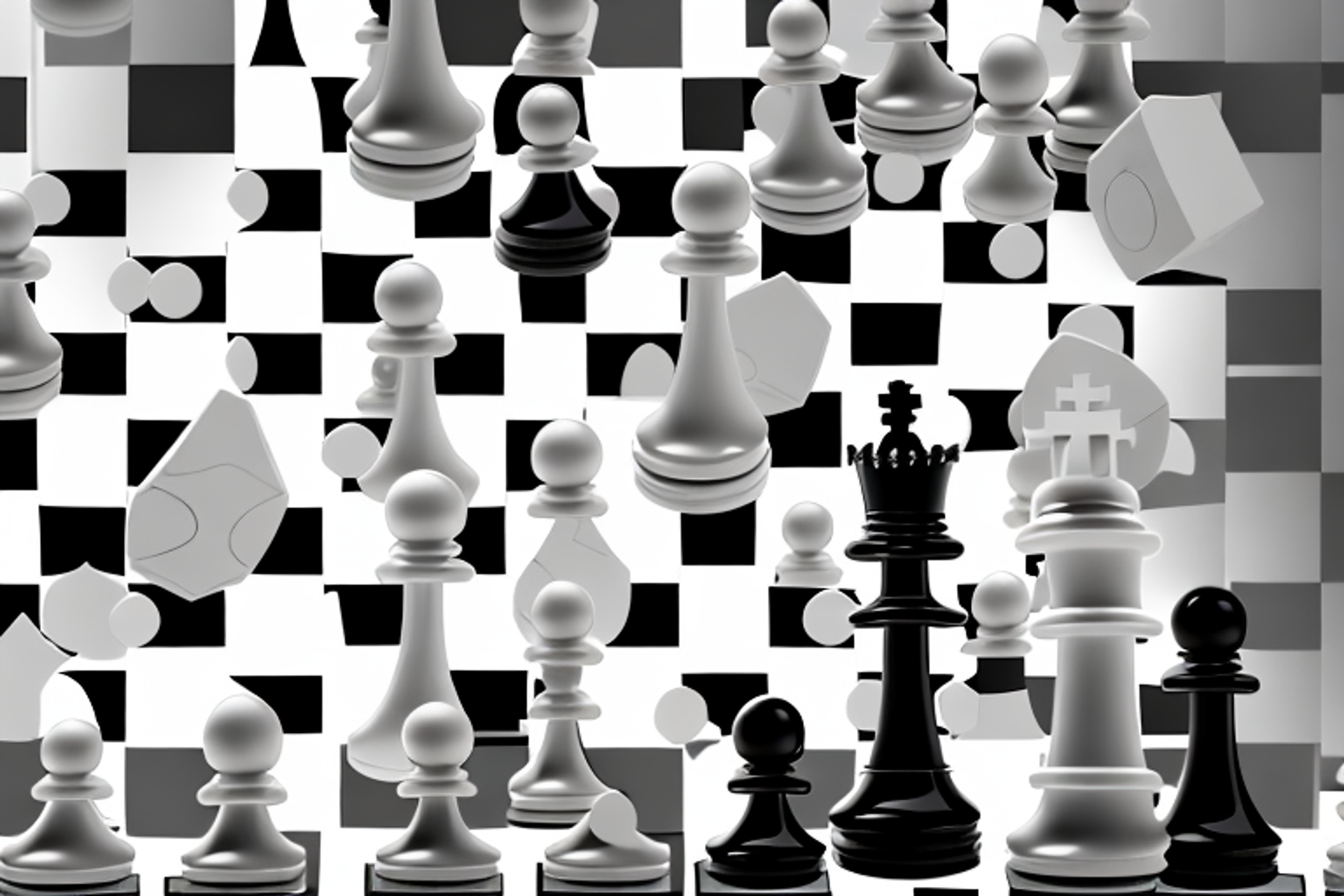
Table of Contents
The LSAT analytical reasoning section can be a daunting task for many test takers, particularly when it comes to mapping games. Mapping games involve diagramming or mapping out a scenario of elements and their relationships to each other. These types of games are essential for mastering the LSAT analytical reasoning section, as they test critical skills such as deductive reasoning, pattern recognition, and inference making. In this article, we'll explore the key strategies and tips you need to succeed in mapping games on the LSAT.
What Are Mapping Games and Why Are They Important for LSAT Analytical Reasoning?
Mapping games fall under the analytical reasoning section of the LSAT and test a candidate's ability to make deductions and draw inferences from a given set of information. These games present a scenario, problem, or puzzle that you must solve by identifying and analyzing the constraints and relationships between the various elements presented. They are essential in the LSAT analytical reasoning section because they test the ability to make logical connections between different pieces of information and apply that understanding to formulate a solution.
Furthermore, mapping games are also important because they simulate real-world scenarios where you must analyze complex information and make decisions based on that analysis. This skill is highly valued in many professions, including law, business, and finance. By mastering mapping games in the LSAT, you are not only improving your chances of getting into law school, but also developing a valuable skill set that will serve you well in your future career.
Understanding the Different Types of Mapping Games on the LSAT
Mapping games on the LSAT can come in different forms and have various structures. Some of the most common types include linear distribution, grouping, and sequencing games. Linear distribution games involve placing elements in a particular order or arranging them in a straight line. Grouping games involve dividing elements into subsets based on specific rules or criteria. Sequencing games require organizing elements in a particular order or sequence.
Another type of mapping game on the LSAT is the mapping game with conditional rules. These games involve rules that are dependent on certain conditions being met. For example, if A is placed in the first position, then B must be placed in the third position. These games can be more complex and require careful attention to detail.
Additionally, some mapping games on the LSAT may involve a combination of different types. For example, a game may require both linear distribution and grouping, or sequencing and conditional rules. It is important to carefully read and analyze the instructions for each game to determine the type and structure of the mapping game.
Key Analytical Reasoning Skills Needed for Mapping Games
Mapping games require several essential analytical reasoning skills, and a candidate must master these skills to excel in this section. These include pattern recognition, deductive reasoning, and inference making. Pattern recognition involves the ability to discern recurring features, connections, or similarities between different elements. Deductive reasoning is the ability to draw logical conclusions based on information presented and a candidate's cognitive processes. Inference making involves the ability to derive meaning or testable predictions from available information.
Another important analytical reasoning skill needed for mapping games is spatial reasoning. Spatial reasoning involves the ability to mentally manipulate and visualize objects in space and understand their relationships to one another. This skill is particularly important in mapping games, as candidates must be able to understand and interpret maps and spatial data accurately. Additionally, candidates must be able to use spatial reasoning to identify patterns and relationships between different elements on the map, such as identifying clusters of data or understanding the flow of traffic in a particular area.
Tips for Efficiently Diagramming Mapping Games
One of the most critical strategies for success in mapping games is efficient diagramming. Efficient diagramming allows you to identify constraints and visualize relationships between different elements better. When diagramming, always start by creating a grid or table to help you keep track of information. Use shorthand marks and symbols to represent different elements and their relationships. Finally, be sure to update your diagram as you eliminate incorrect choices and make deductions.
Another useful tip for efficient diagramming is to look for patterns and repetitions in the given information. For example, if there are three elements that can only be in one specific order, you can use this information to eliminate incorrect choices and narrow down the possibilities. Additionally, it's important to pay attention to any clues or hints provided in the game, as they can often provide valuable information that can help you solve the puzzle.
Finally, it's important to practice efficient diagramming regularly to improve your skills. You can find many online resources and practice games to help you hone your diagramming abilities. By practicing regularly and using the tips and strategies outlined above, you can become a master at mapping games and solve even the most challenging puzzles with ease.
How to Identify and Utilize Inferences in LSAT Mapping Games
Inference making is another essential skill in mapping games on the LSAT. Candidates should learn to identify inferences by looking for existing relationships between elements or opportunities to create additional relationships through the elimination of options. The key is to focus on the relationships between different elements and look for constraints that can either confirm or eliminate certain options. Understanding and making use of inferences is often the difference between a correct and incorrect response.
One effective way to identify inferences is to create a diagram or visual representation of the game. This can help candidates see the relationships between different elements more clearly and identify any patterns or constraints that may exist. Additionally, candidates should practice making inferences by working through practice problems and identifying any potential relationships or constraints that can be inferred from the given information.
It is important to note that not all mapping games will have clear inferences that can be made. In some cases, the information provided may be more ambiguous or open-ended, making it more difficult to identify any concrete relationships or constraints. In these situations, candidates should focus on eliminating options and making educated guesses based on the information provided.
Common Mistakes to Avoid When Solving Mapping Games on the LSAT
One common mistake in mapping games is rushing through the information rather than taking the time to understand and organize the constraints and relationships. Another mistake is focusing too much on individual elements instead of looking for the connections between elements. Finally, avoid making assumptions or drawing conclusions based on incomplete information or personal biases.
Another mistake to avoid when solving mapping games on the LSAT is failing to consider all possible scenarios. It is important to consider all possible combinations and permutations of the given information to ensure that all possible outcomes are accounted for. Additionally, it is important to keep track of all deductions made during the game, as failing to do so can lead to confusion and mistakes later on.
It is also important to pay attention to the wording of the game and the rules provided. Misinterpreting a rule or misunderstanding the wording of a question can lead to incorrect deductions and ultimately, an incorrect solution. Therefore, it is crucial to read and re-read the rules and questions carefully to ensure that you have a clear understanding of what is being asked.
Practice Exercises for Improving Your LSAT Analytical Reasoning Skills in Mapping Games
Frequent practice is essential for improving analytical reasoning skills in mapping games. To start, take practice tests available online or in LSAT preparation books. Review and analyze the games you struggled with or got wrong and pinpoint where you made errors. Finally, try to simulate real exam conditions as much as possible, including the time limits, testing environment, and distractions.
It is also helpful to work with a study group or tutor who can provide feedback and offer different perspectives on the games. Collaborating with others can help you identify new strategies and approaches to solving mapping games. Additionally, consider using online resources such as video tutorials or forums to supplement your practice and gain insights from other LSAT test-takers.
How to Build a Study Plan Focused on LSAT Analytical Reasoning Strategies for Mapping Games
Building a study plan requires setting goals, finding resources, and dedicating time to review and practice. Start by setting specific and achievable goals, like improving your accuracy or shortening your response time. Next, gather resources that align with these goals, including books, study guides, or practice tests. Finally, dedicate time each week to review and practice mapping games, focusing on those that challenge you the most.
It's also important to track your progress and adjust your study plan accordingly. Keep a record of your scores and identify areas where you need improvement. This will help you focus your efforts and make the most of your study time. Additionally, consider seeking out a study group or tutor to help you stay motivated and accountable. With a solid study plan and consistent effort, you can improve your LSAT analytical reasoning skills and achieve your goals.
Real-Life Applications of LSAT Analytical Reasoning Strategies in Mapping Games
The critical thinking skills required for mapping games on the LSAT have real-life applications beyond the exam. These skills are invaluable for careers that require logical and analytical problem-solving, such as law, management, or finance. They also provide individuals with the ability to assess and interpret complex scenarios, make informed decisions, and communicate effectively.
Mastering mapping games is essential to performing well on the LSAT analytical reasoning section. The strategies and tips outlined in this article can help you improve your analytical reasoning skills and increase your chances of success on the LSAT. Remember to remain focused, practice regularly, and analyze your performance to pinpoint and correct errors. With dedication and effort, you can master these critical skills and achieve your LSAT goals.
Moreover, the analytical reasoning skills developed through mapping games can also be applied to everyday life situations. For instance, when making important decisions, individuals can use these skills to evaluate different options, weigh the pros and cons, and make informed choices. Additionally, these skills can help individuals identify and solve problems in their personal and professional lives, leading to more effective and efficient outcomes.
Furthermore, mastering mapping games can also improve an individual's cognitive abilities, such as memory, attention, and concentration. These skills are essential for success in various fields, including education, research, and creative industries. By regularly practicing mapping games, individuals can enhance their cognitive abilities and improve their overall performance in these areas.











